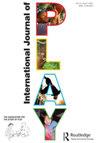学龄期儿童游戏性知觉与内感受性意识的关系:一项探索性研究
IF 1.2
Q3 EDUCATION & EDUCATIONAL RESEARCH
引用次数: 0
摘要
可玩性是决定儿童游戏质量的关键因素,而内感受性意识(IA)有可能影响儿童游戏的一系列要素。IA指的是一个人对他/她身体内部过程的有意识感知。这项研究调查了学龄儿童对他们的IA和他们的玩耍方面的看法之间的关系。30名8 - 12岁的正常发育儿童完成了青少年内感受意识多维度评估(MAIA-y)、儿童自述游戏性(CSRP)量表和儿童游戏感知(CPTP)量表。数据分析采用Spearman rho相关和带自举的线性回归。MAIA-y自我调节子量表对CSRP总量表得分具有预测作用,占其方差的9.3% (p < 0.05)。MAIA-y not - distraction子量表是CPTP Social Play子量表的重要预测因子,占其方差的18.1% (p = 0.011)。MAIA-y情绪意识子量表是CPTP自由时间子量表的显著预测因子,占其方差的15.4% (p = 0.018)。这些发现为学龄儿童对自己的游戏性感知与内感受意识之间的关系提供了一些初步的证据。这为从事儿童工作的治疗师、教育工作者和卫生专业人员提供了宝贵的见解。本文章由计算机程序翻译,如有差异,请以英文原文为准。
The relationship between school-age children’s perceptions of their playfulness and interoceptive awareness: an exploratory study
ABSTRACT Playfulness is a key element in determining the play quality of children and interoceptive awareness (IA) has the potential to influence a range of elements of children’s play. IA refers to a person’s conscious perception of his/her internal bodily processes. This study investigated the association between school-age children’s perceptions of their IA and aspects of their playfulness. Thirty typically developing children aged between eight and 12 years completed the Multidimensional Assessment of Interoceptive Awareness-Youth (MAIA-y), Child Self-Report Playfulness (CSRP) scale and the Children’s Perception of Their Play (CPTP) scale. Data were analysed using Spearman rho correlations and linear regressions with bootstrapping. The MAIA-y Self-Regulation subscale was predictive of the CSRP total scale score, accounting for 9.3% of its variance (p < 0.05). The MAIA-y Not-Distracting subscale was a significant predictor of the CPTP Social Play subscale, accounting for 18.1% of its variance (p = .011). The MAIA-y Emotional Awareness subscale was found to be a significant predictor of the CPTP Free Time subscale, accounting for 15.4% of its variance (p = .018). These findings provide some preliminary evidence about the relationship between school-age children’s perceptions of their playfulness and interoceptive awareness. This provides valuable insights for therapists, educators and health professionals working with children.
求助全文
通过发布文献求助,成功后即可免费获取论文全文。
去求助
来源期刊

International Journal of Play
Social Sciences-Cultural Studies
CiteScore
1.90
自引率
20.00%
发文量
60
期刊介绍:
The International Journal of Play is an inter-disciplinary publication focusing on all facets of play. It aims to provide an international forum for mono- and multi-disciplinary papers and scholarly debate on all aspects of play theory, policy and practice from across the globe and across the lifespan, and in all kinds of cultural settings, institutions and communities. The journal will be of interest to anthropologists, educationalists, folklorists, historians, linguists, philosophers, playworkers, psychologists, sociologists, therapists and zoologists.
 求助内容:
求助内容: 应助结果提醒方式:
应助结果提醒方式:


